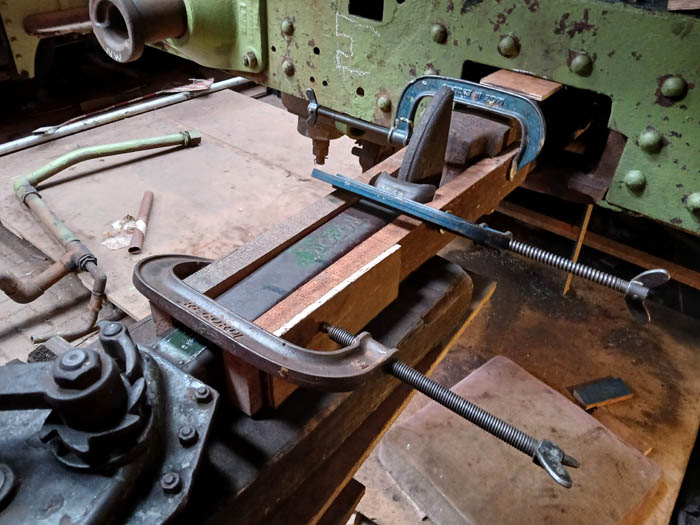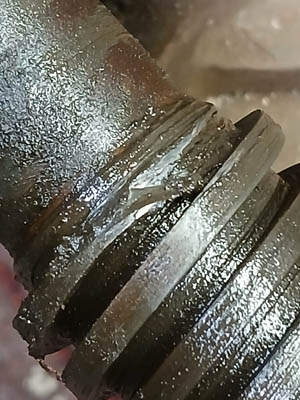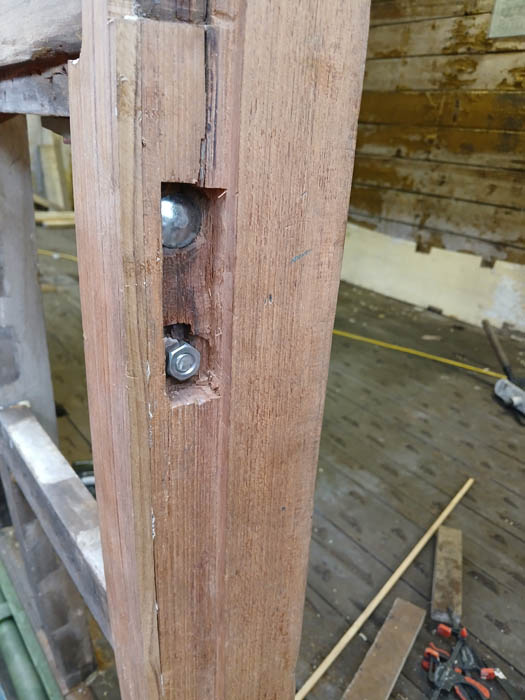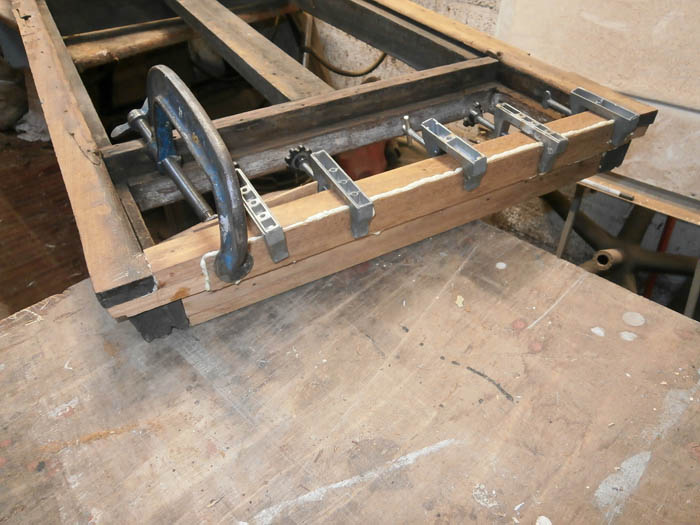
Summer 2025
A job which consumed an inordinate amount of time was getting the west drawhook back into place. After several abortive schemes we eventually succeeded using a screw jack with hardwood "splints" clamped on both sides, a lot of grease, and 644 used as something to push against. See photo below. Next task was to line up the hook with the holding stud and drop the drawhook pin to couple the two. Then the drawhook holding stud had to be tightened using the 2" BSW nut, a very large spanner and a sledge hammer. Yes, it was tight.

To refit the handbrake pedestal into its original LNER position, a replacement hardwood spacer had to be designed and constructed as the distance between the screw bottom bearing and the pedestal bottom face was not the same as the BR location nearer the centre of the carriage. We discovered that the handbrake screw thread was damaged and this in turn had damaged the internal thread of the travelling block, so that needed to be rectified before the pedestal was installed.
 |
 |
In its days as part of a breakdown train, BR saw fit to remove the footboards on both sides of the carriage. The supporting brackets were flame cut as the cheap and cheerful way of getting them out of the way, rather than removing the rivets which held them in place on the solebar. However, to fit full length footboards again the bracket stubs had to be removed in order that new complete brackets could be re-installed. The rivet heads were drilled then knocked off so that the rivet could be "popped out" into the interior of the chassis. The rivets were not cooperative requiring a great deal of banging to force them through the solebar, but we got them all out in the end.

While preparing to fit the missing waist level knee irons to doors 7 and 12 hinge posts it
was noticed that the profile of the door 12 post was not quite right so a new outer "skin" was prepared and glued
on to the existing post. Where the knee iron bolt heads were visible on the hinge side of the posts, the
offending items were blocked in by gluing small pieces of teak across the location of the counterbores,
then sanding them down flush with the pillar.
BR had removed the grooved line of the floor exterior sill across the west cargo door orrifices, so new ones made
from 3/8" thick teak were fashioned and glued in place.

A lot of work has been going on "offline", principally restoration of the external doors. Many of these had very badly marked, knocked, split and damaged outer faces. The technique for repairing these came down to sawing off the outer 3/8" which was damaged, then gluing a "nice" facing on. This gave the doors a far better appearance. As BR had replaced 4 cargo doors with sliding ones, 4 new hinged cargo doors (7, 8, 11, 12) will have to be manufactured from scratch. That will be no 5 minute job!